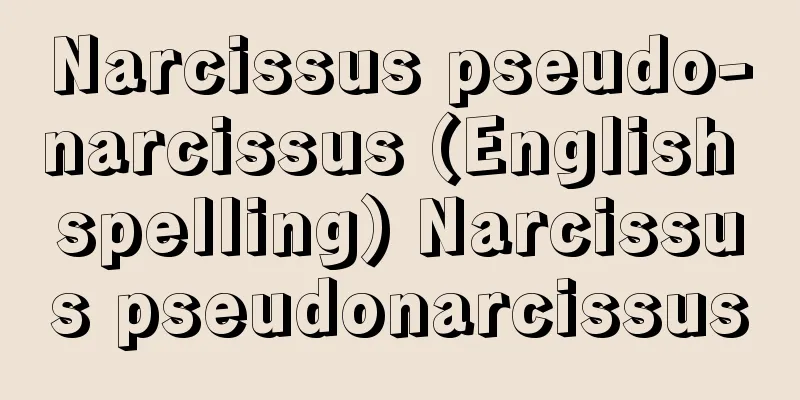Naginata - Long-horned sword

|
It was one of the most important weapons in the Middle Ages, and was originally written as naginata (long sword), and was also called bisentou (eyebrow-pointed sword) or engetou (scattered moon sword) due to the shape of the blade. It has a wide blade with a curved tip, a long blade and a long handle, and was used to sweep and knock down enemies using centrifugal force. Depending on the length and shape of the blade, there are various types such as large naginata (large long sword), small naginata (small claw long sword), small claw long sword, double-edged naginata (both blades), small reverse blade long sword, and hatchet long sword. From the time of the Genpei War in the late Heian period, it was favored by lower-ranking samurai and warrior monks as a weapon advantageous in close one-on-one combat, and later became an essential tool for night attacks and horseback combat. From the mid-Kamakura period onwards, master craftsmen such as Osamitsu, Kagemitsu and Yoshioka Ichimonji Sukemitsu of Bizen also began to work on it, producing precision-made, sharp swords. To prevent the handle from breaking, luxurious swords appeared, such as the Hirumaki, which is made of hemp or rattan wrapped around the tachiuchi and hardened with lacquer, the Sendanmaki and Aogai Tataki, which are about one inch long and are wrapped diagonally with silver or copper gold. Then, at the height of the Nanboku-cho period, the long O-naginata appeared, with a blade as long as five shaku. As the Muromachi period began, swords with a deep curve at the tip and a very sharp look came to be popular, and the Nagamaki, which combined the advantages of both the Tachi and Naginata, appeared and was used in combination. However, towards the end of the Sengoku period, its status declined significantly due to the popularity of spear and gun units. Furthermore, in the Edo period, it became a tool for self-defense for samurai women or a decorative item in feudal lord processions. As a result, works from this period were mere formalities and there were few masterpieces, and swords with blades of 1 shaku 5 sun or 1 shaku and handles of 5 shaku or 6 shaku became the norm (current naginata competition rules state that the blade should be made of bamboo, the handle of oak, and the overall length should be 2.1 to 2.25 meters). As a martial art, naginatajutsu gave birth to various schools, including the Shinto-ryu Naginata (Anazawa-ryu) school established by Anazawa Jyoken Nyudo Hidetoshi in the early modern period, but there were few schools that were solely dedicated to naginata, and many were passed down in conjunction with earlier schools of sword, spear, or judo. Eventually, naginata came to be widely practiced among the children of samurai families as a form of culture rather than simply a form of self-defense, and it became customary to bring naginata with you to the wedding, and it came to be considered a representative martial art for women and children. During the decline of martial arts in the early Meiji period, female swordsmen competed alongside stronger male swordsmen in so-called kendo performances, and some even held women's martial arts demonstrations. Among them, Shigeo, the wife of Satake Kanryusai of the Jikishin Yanagikage school, was extremely popular for her beauty and her superb skills, which were said to be unparalleled in history. Around the time of the Sino-Japanese War, it began to be recognized again from the standpoint of cultivating feminine virtue and physical education for women, and a method of teaching was devised by Mitamura Akinori of Tendō-ryū, who was active mainly at the Dai-Nippon Butoku-kai in Kyoto, and Ozawa Unosuke of the Japan Athletic Association, who advocated naginata exercises, and it gradually became practiced at women's normal schools and high schools for girls. Furthermore, during the Taisho period, female instructors such as Mitamura Chiyo of Tendō-ryū, Sonobe Hideo of Jikishinkage-ryū, Murakami Hideo and Kobayashi Sei of Toda-ha Buko-ryū, and Arai Tsutara of Kōshin-ryū appeared and worked to popularize it. In 1934 (Showa 9), a teacher training institute specializing in naginata was established at the Dai Nippon Butokukai, followed by Shutokukan in Setagaya, Tokyo in 1936, and both schools worked to train instructors. In 1940, the Butokukai advocated for the establishment of the "Basic Movements of Naginata-do," centered on the two schools of eastern and western naginata, Jikishinkage and Tendo, and in response, the Ministry of Education also established unified basic naginata movements, which were implemented as martial arts teaching materials in girls' secondary schools and national schools from the following year, but with the end of World War II, teaching in schools was completely banned. After the war, in response to the demands of the new era, it was restarted as a women's martial arts sport, and in 1955 (Showa 30), the All Japan Naginata Federation was formed in Kyoto, which established a unified set of "Koryu no Kata (7 moves)" and competition rules, and created "School Naginata" as a physical education teaching material for women. In 1959, it was revived as a club activity for junior high school and above, and in 1967 it was allowed to be implemented as a regular curriculum teaching material in high school physical education, and the rules for both matches and refereeing for the "New Naginata" were decided. The following year, in 1968, the federation became a foundation, and in 1978 it was admitted to the Japan Amateur Sports Association (now the Japan Sports Association), and in 1983, the 38th Gunma National Sports Festival saw the first official "Naginata competition" event. Since then, the number of participants has increased, and it has continued to develop smoothly as one of the nation's sports. [Ichiro Watanabe] [References] | | | | | |©Katsuya Nishikawa "> Types of Japanese Swords (Swords) Source: Shogakukan Encyclopedia Nipponica About Encyclopedia Nipponica Information | Legend |
|
中世の有力武器の一つで、古くは長刀と書き、また刀身の形態から眉尖刀(びせんとう)、偃月刀(えんげつとう)などとよばれた。刃の幅を広くして先反(さきぞ)りをきかせ、刀身の茎(なかご)を長くして長い柄(え)に収めたもので、遠心力を利用して敵をなぎ払い、なぎ倒すのに用いられた。刃の長短や形態などによって大長刀(おおなぎなた)、小(こ)長刀、爪小(つめこ)長刀、両刃(りょうば)長刀、小反刃(こぞりば)長刀、鉈(なた)長刀などの種類がある。 平安後期、源平合戦のころから、一騎打ちの接戦に有利な武器として、下級武士や僧兵などの間に好んで用いられ、のちに夜討(ようち)や馬上(ばじょう)の必要具となった。鎌倉中期以後は備前の長光(おさみつ)、景光(かげみつ)、吉岡一文字助光(よしおかいちもんじすけみつ)などの名工もこれを手がけるようになり、精巧鋭利なものがつくられ、また柄の折れを防ぐために太刀打(たちうち)に麻や籐(とう)を巻き漆で固めた蛭巻(ひるまき)や、千段巻、青貝叩(たた)きなど、約1寸ほどの銀や銅の延べ金を斜めに巻いた豪華なものが現れた。ついで南北朝時代の最盛期には刀身が5尺もある長大な大長刀が出現した。やがて室町時代に入ると、先反りの深い、いかにも鋭いという感じのものが好まれ、また太刀と長刀の両者の長所をとった長巻が現れ併用された。しかし戦国末期となり、槍(やり)隊や鉄砲隊の活躍によってその地位は著しく低下した。さらに江戸時代に入っては、武家婦人の護身具か、または大名行列の飾り道具と化すに至った。したがってこの時代の作品は形ばかりで名作が少なく、また刀身も1尺5寸ないし1尺、柄も5尺、6尺のものが一般化した(現行のなぎなた試合規定では、刃部は竹、柄部は樫(かし)の木で作られ、全長2.1~2.25メートルと定められている)。 武術としての薙刀術は、近世初頭に成立した穴沢浄見入道秀俊(あなざわじょうけんにゅうどうひでとし)の新当(しんとう)流長刀(なぎなた)(穴沢流)をはじめとする諸流派が生まれたが、薙刀単独の流派は少なく、剣・槍または柔術などの先行流派に付随して継承されたものが多かった。やがて武家の子女の間に、薙刀はただの護身術としてではなく、教養として広く行われ、婚嫁の際にも薙刀を持参する風が生じ、婦女子の代表的な武芸とされるまでになった。 明治初期の武道衰退期には、いわゆる撃剣興行に、屈強の男子に混じって女子剣士が薙刀で活躍し、また女流演武会を催すものもあったが、なかでも直心柳影(じきしんやなぎかげ)流佐竹鑑柳斎(さたけかんりゅうさい)の夫人茂雄(しげお)はその美貌(びぼう)と古今無双といわれた妙技で大いに人気を博した。 日清(にっしん)戦争前後から婦徳涵養(かんよう)ないし女子体育の立場から再認識されるようになり、京都の大日本武徳会を中心に活躍した天道流の美田村顕教(みたむらあきのり)や、薙刀体操法を提唱した日本体育会の小沢卯之助(うのすけ)らによって一斉教授法が考案され、女子師範学校や高等女学校などでもしだいに行われるようになった。さらに大正期にかけては、天道流の美田村千代、直心影(じきしんかげ)流の園部秀雄、戸田派武甲流の村上秀雄・小林せい、鏡心流の新井つたらの女流指導者が現れ、その普及に努めた。1934年(昭和9)には大日本武徳会に、ついで1936年東京世田谷(せたがや)の修徳館に薙刀専修の教員養成所が設けられ、ともに指導者の養成に努めた。1940年武徳会が主唱して、直心影・天道の東西二流を中心に「薙刀道基本動作」を決め、これを受けて文部省も統一した基本薙刀を制定し、翌年度から女子中等学校ならびに国民学校体錬科の武道教材として実施されたが、第二次世界大戦の終結によって、学校における教授を全面的に禁止された。 戦後は新しい時代の要求に基づき、女子の格技スポーツとして再出発し、1955年(昭和30)京都で「全日本なぎなた連盟」が結成され、統一的な「古流の型(7本)」や競技規程を決め、女子体育教材としての「学校なぎなた」を作成した。ついで1959年には中学校以上にクラブ活動として復活、1967年には高校体育の正課教材として実施できることとなり、「新しいなぎなた」の試合・審判両規定を決めた。翌1968年、連盟の財団法人化が、さらに1978年には日本体育協会(現、日本スポーツ協会)加盟が認められ、1983年の第38回群馬国体に初めて正式種目として「なぎなた競技」が実施された。以後、競技人口も増加し、国民スポーツの一つとして順調な発展を続けている。 [渡邉一郎] [参照項目] | | | | | |©西川勝也"> 日本刀(刀剣)の種類 出典 小学館 日本大百科全書(ニッポニカ)日本大百科全書(ニッポニカ)について 情報 | 凡例 |
<<: Naginata Koju - Naginata Koju
>>: Minami Kiso [town] - Nagiso
Recommend
Chōbiroku - Chohiroku
A book from the late 16th century in Korea. The au...
Prostitute - Suugi
〘 noun 〙 A geisha who has not yet become a full-fl...
kpc
…The absolute magnitude, which indicates the lumi...
Kandenan - Kandenan
<br /> A teahouse in Sugata-machi, Matsue Ci...
Charles Sealsfield
1793‐1864 Austrian author. His real name was Karl ...
Gokoku Shrine
A shrine that enshrines the souls of those who di...
Lyctus linearis (English spelling)
… [Chokane Hayashi]. … *Some of the terminology t...
Iron sulfide mineral
This refers to naturally occurring iron sulfides. ...
Lycaste cruenta (English spelling)
…[Koichi Ejiri]. … *Some of the terminology expla...
Sanity Song
[1] An ancient five-character poem written by Wen ...
'Ammān
The capital of Jordan, located in northwestern Jor...
Phonon - phonon (English spelling)
This refers to a quantum of energy generated by t...
Ramie - Ramie
A perennial plant of the Urticaceae family. Found ...
São Jorge da Mina (English spelling)
…The name El Mina (meaning "mine") come...
Izuna Tsukai - Izuna Tsukai
1. A type of magic that originated in ancient time...









